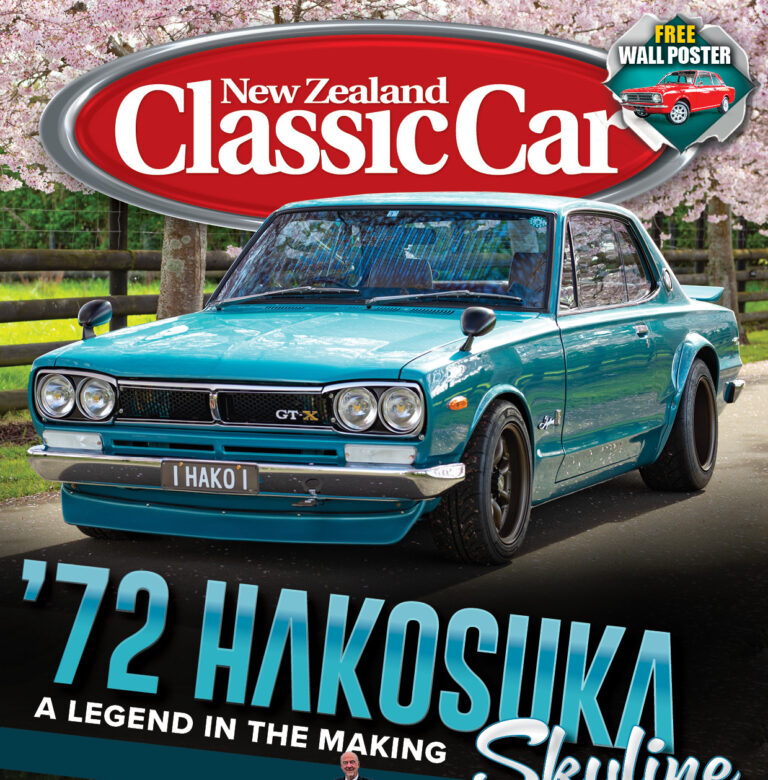The VW Kombi van is one of the best-known vehicles in automotive history, and for owners such as Steve and Denise Fejos, this loyal steed helps make memories that will never be forgotten
By Ashley Webb, photography John Galvin — The Surgery
Dutch Volkswagen importer Ben Pon visited the VW factory on Wednesday, 23 April 1947, when it was still controlled by the British Occupational Forces under the command of Major Ivan Hirst, a British Army officer and engineer assigned to rebuild Volkswagen after the war. Pon wanted to talk about importing Volkswagens into the Netherlands, but it was a special day because he did something else. He took out his notebook and drew an oblong transport vehicle. It was basically no more than a soapbox on wheels, with the cab in front, and in the back, the engine.
How his conversation ended, nobody knows. But one thing is for sure, in 1947 his idea was revolutionary. It was brilliantly simple — a large cargo space in a small area. According to Pon’s calculations, the vehicle would weigh in at just 750 kilos and be capable of carrying cargo in excess of 750 kilos as well.
He based his design on the Plattenwagen, a primitive vehicle which looks like a pushbike with a moped engine, designed by the Volkswagen engineers for internal factory transportation at the Volkswagen plant. Like the Plattenwagen, his design had to be built on the chassis of a Beetle.

Splitty
The first generation of Volkswagen buses, the Type 2 — often referred to as split-window buses, the split-screen, microbus, or the ‘Splitty’ — were built between 1949 and 1967. This second vehicle line introduced by Volkswagen, after the iconic Beetle, is generally considered to be the forerunner of modern van. Split-screen vans came in many guises, as a panel, kombi, standard, deluxe, ambulance, fire truck, single and double cab, walk-through, and double door versions, during an 18-year production period.
Split-screen models are recognisable for the sweeping V-line front and a large VW emblem. They also boasted generous interior space, about 4.8 cubic metres, which made them ideal for tradespeople and for carrying passengers.
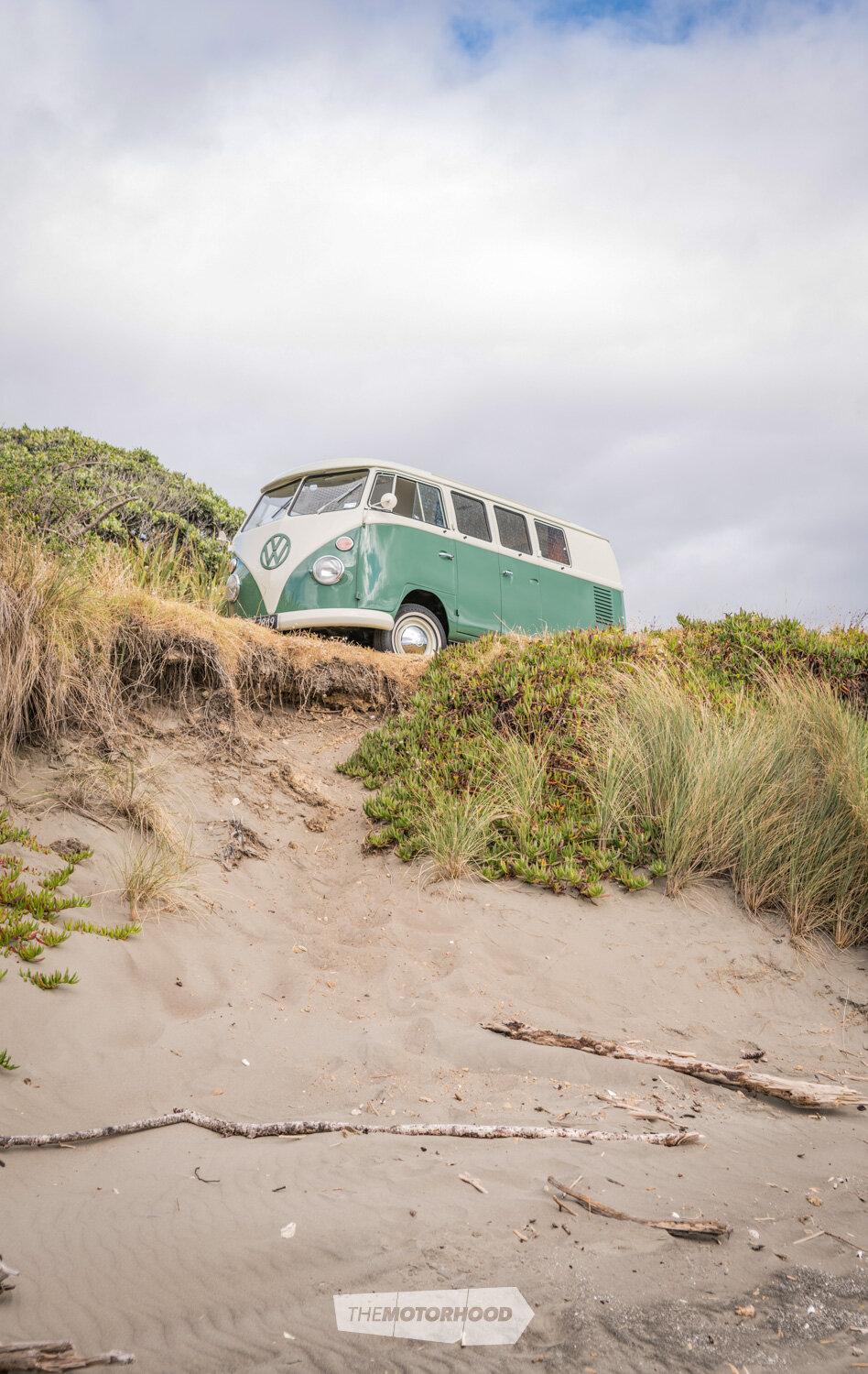
The engine was courtesy of the Beetle, but the Splitty boasted unitary construction supported by a ladder frame. It consisted of two longitudinal parallel girders or beams upon which the suspension, engine, and transmission are mounted, instead of on the central frame platform. The payload was roughly 750kg, and the torsional rigidity inherent in the design ensures that the handling, although not brilliant, is adequate, which explains their usefulness as transporters. The engine had a cubic capacity of just over 1100cc, with an output of 18kW at 3300rpm.
Five decades on, this old-school icon from the 1960s — the era of the Beatles, Woodstock, love, peace, and all things free — built its own sub-culture associated with road trips, surfing, safaris, and endless summer. Given those associations with youth and innocence, the hippiemobile, hippie bus, hippie van, call it what you will, is as popular as ever, whether you actually experienced that kind of carefree VW-powered wandering back then or not. This friendly and fun-loving van with its bubbly engine note bustles its way into everyone’s affections with as much personality as a floppy family dog.
While the second-generation models are almost as revered, the original Splitties are now rare and highly prized collectors items all over the globe. Whatever nickname you give it, the Kombi reigns supreme over its segment and has set itself into history for good.
Kombined holidays
We recently caught up with VW enthusiast Steve Fejos, son of Hungarian parents who arrived in New Zealand as refugees after the ’56 uprising. Being European, Steve was naturally attracted to European cars, especially the more affordable VWs. “We must have owned at least 20 Kombis and Beetles over the years,” says Steve. “My father was a handyman and was always doing things — buying, selling, and doing work and repairs at his property, so the Kombi was the ideal work horse he needed.”
As a young boy, under 10 years of age, Steve always liked to tag along with his father. Kombis in the 1960s and 1970s were usually rust buckets, but that didn’t deter his father from buying one every year and spending the winter months ‘doing it up’. “My father’s method of restoration usually included a few tin sheets, plenty of body filler, and a quick coat of paint, done in the driveway, ready for the family Christmas adventure to Taupo, Rotorua, and Auckland, departing every year on Boxing Day,” says Steve.
These definitely were far more basic than salubrious campers with all mod cons you see travelling the country today. Many had nothing more than a mattress tightly squeezed onto a home-built base as the family explored various camp sites around the North Island. Upon their return home, the Kombi was sold, and each year the process began again. “I have incredibly fond memories of working with my dad. We learnt everything about Kombis and the motors. We could pull out a motor in 30 minutes as teenagers, plus we naturally had all the gear and specialised tools, not that there was much needed,” says Steve.
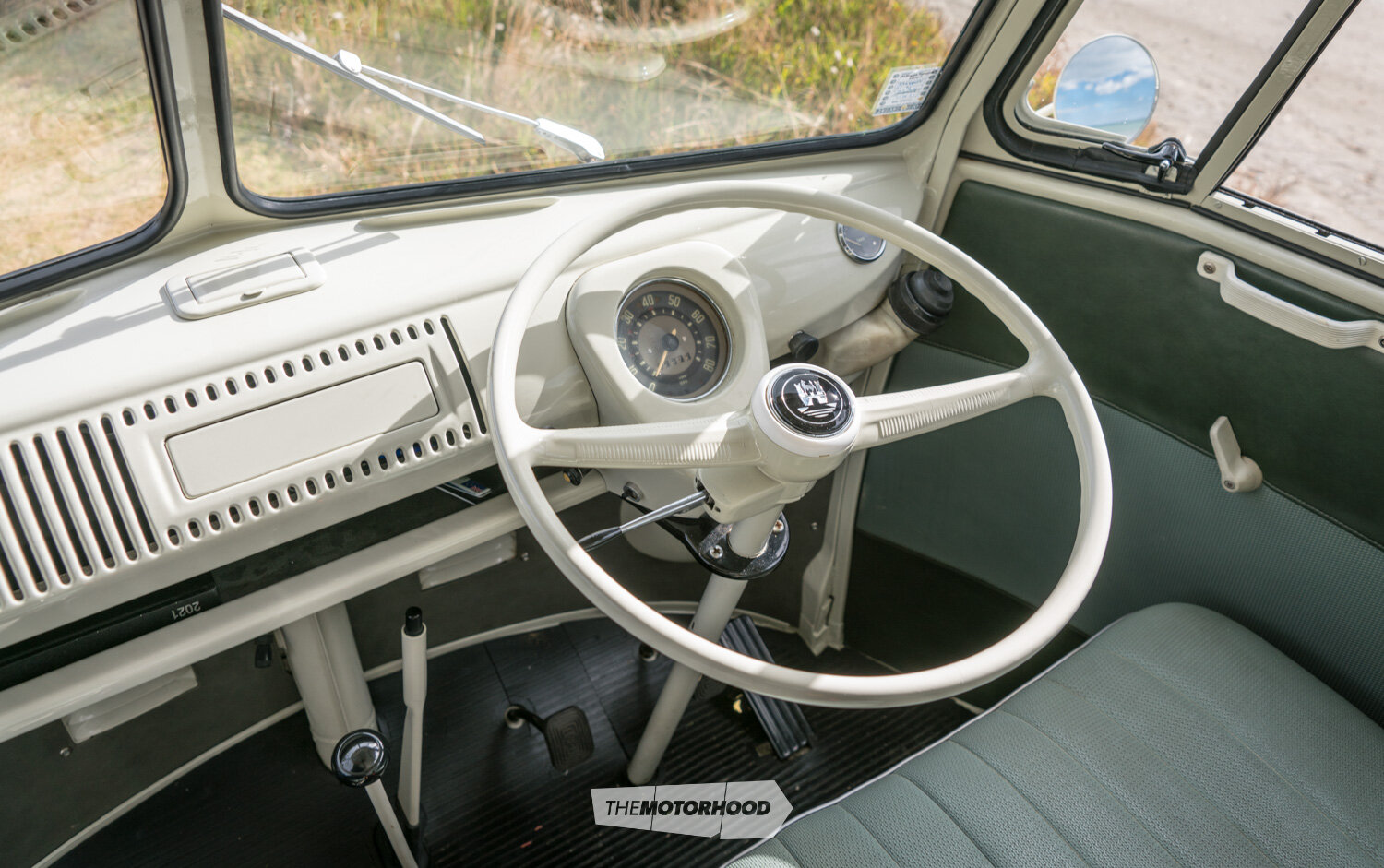

The ONE
Steve has dreamt of owning his own classic Kombi, but for many years it was never the right time or not the right van. Steve instantly knew he’d found the right Kombi when he discovered this much-loved example in Gisborne. It had been owned by the same couple for almost 40 years. They also had an album full of lasting memories of many years of camping holidays with their kids. The Kombi also came with an added bonus, which clinched the deal for Steve. It was not only the last German-assembled, right-hand drive, split-window built in 1967, but it was also a rare factory ‘walk through’. These models had a single passenger and driver seat, allowing you to walk through to the rear.
With the deal done, Steve was excited to pick up his new pride and joy the following morning. “As I hit the motorway, it blew a spark plug — it had de-threaded. I had never seen or heard of that happening before. I limped the van to Thorndon. I had to have it trucked home to Johnsonville — to be greeted with applause by my neighbours and friends,” says Steve.
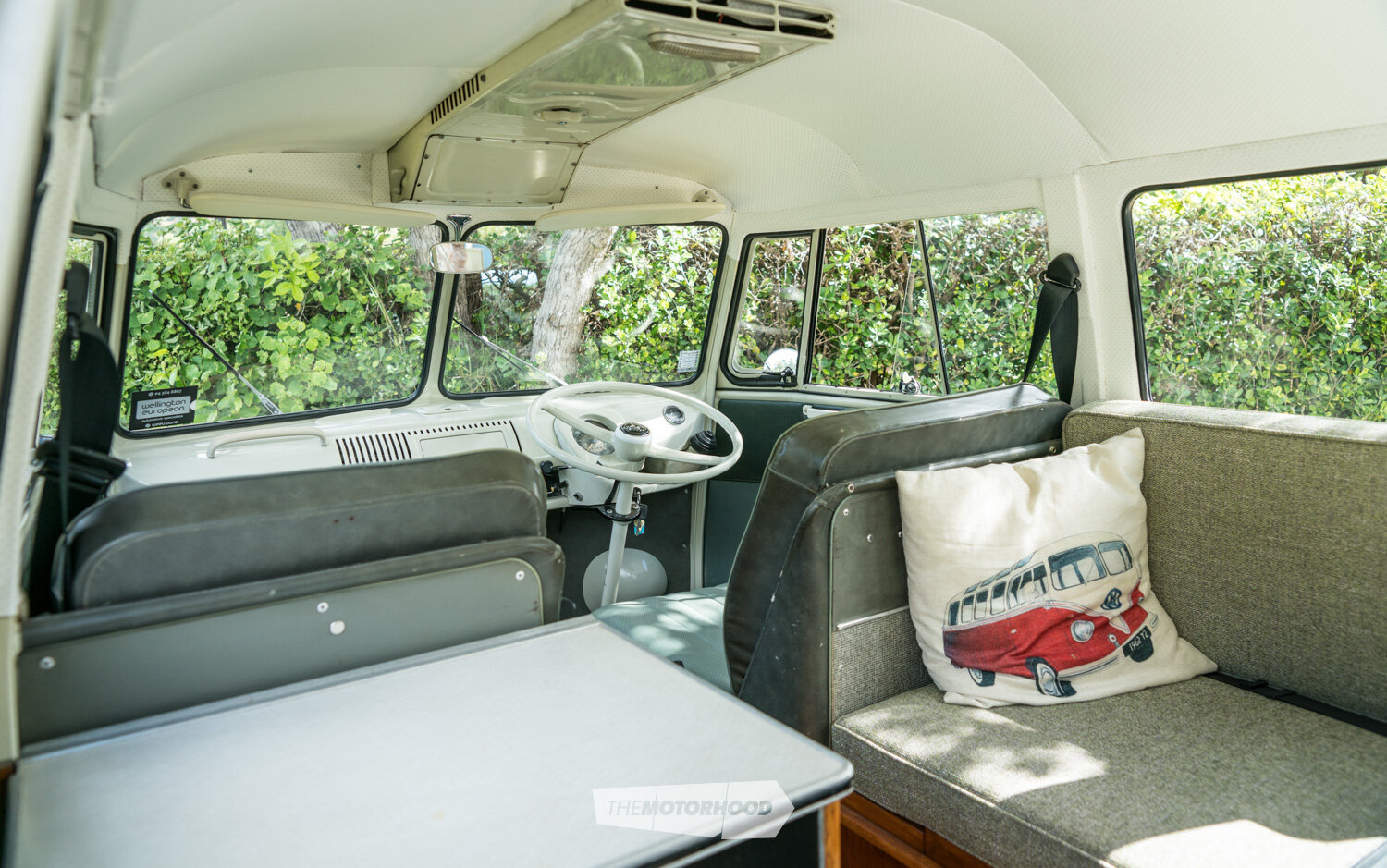
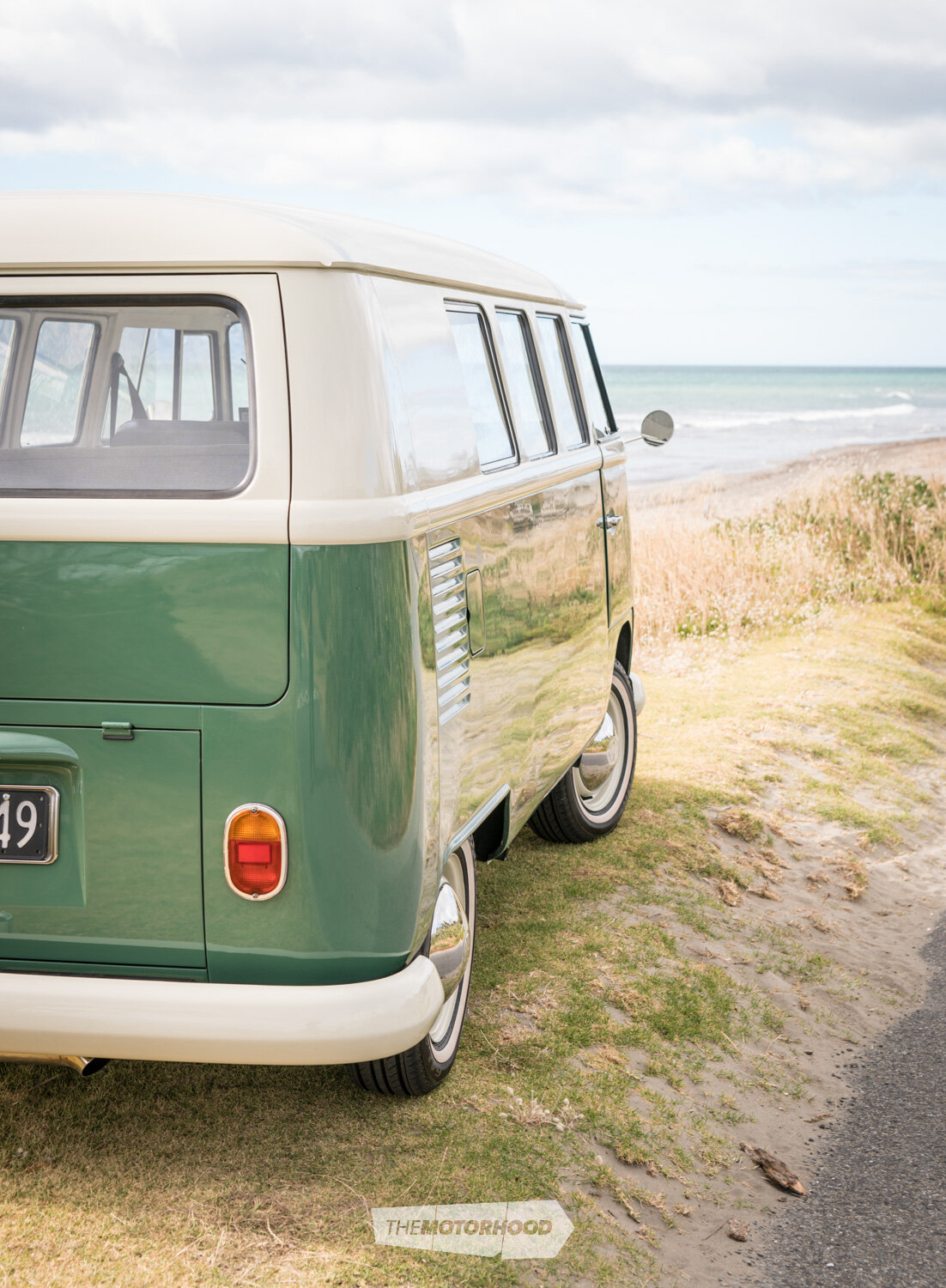
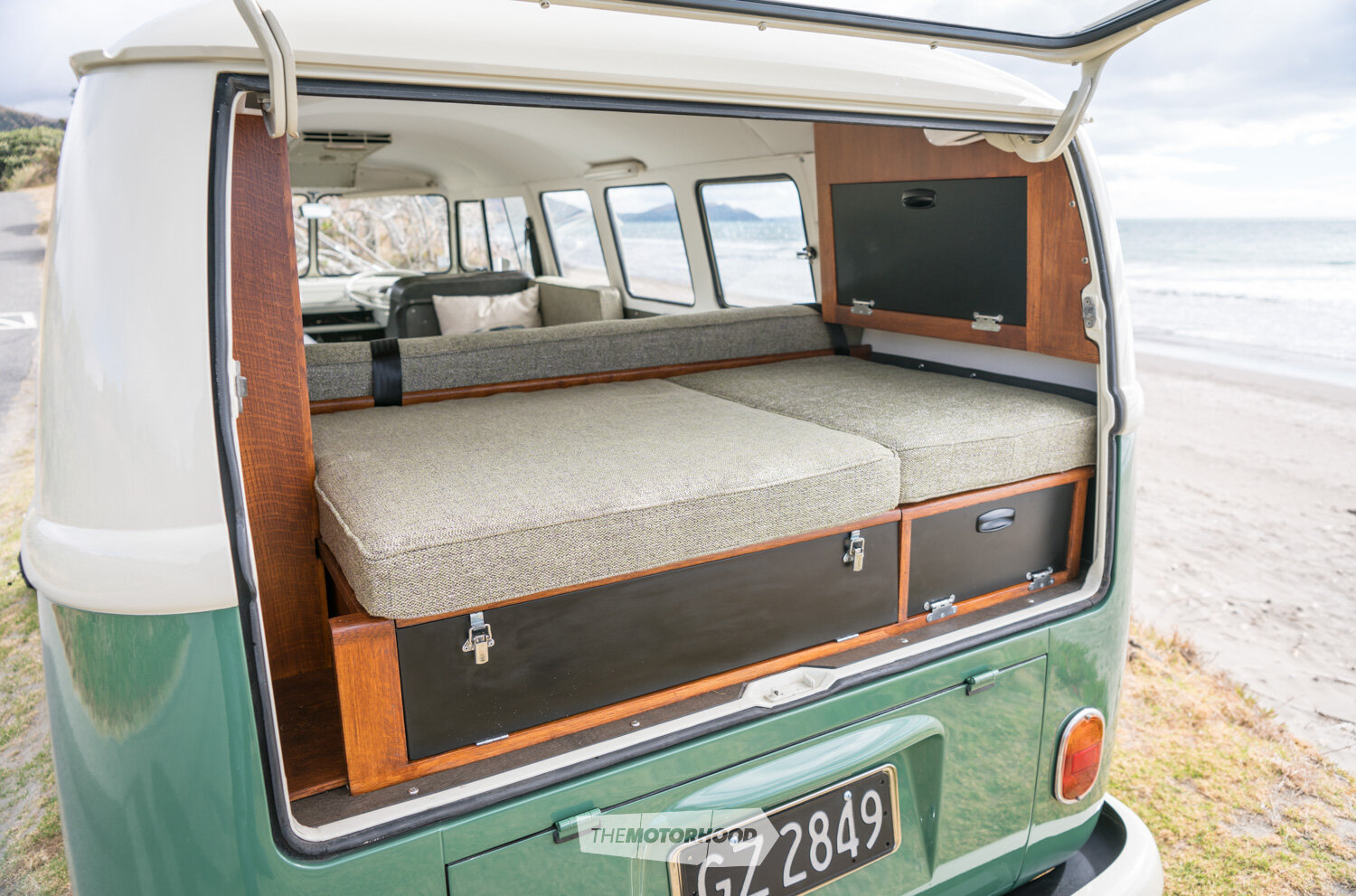



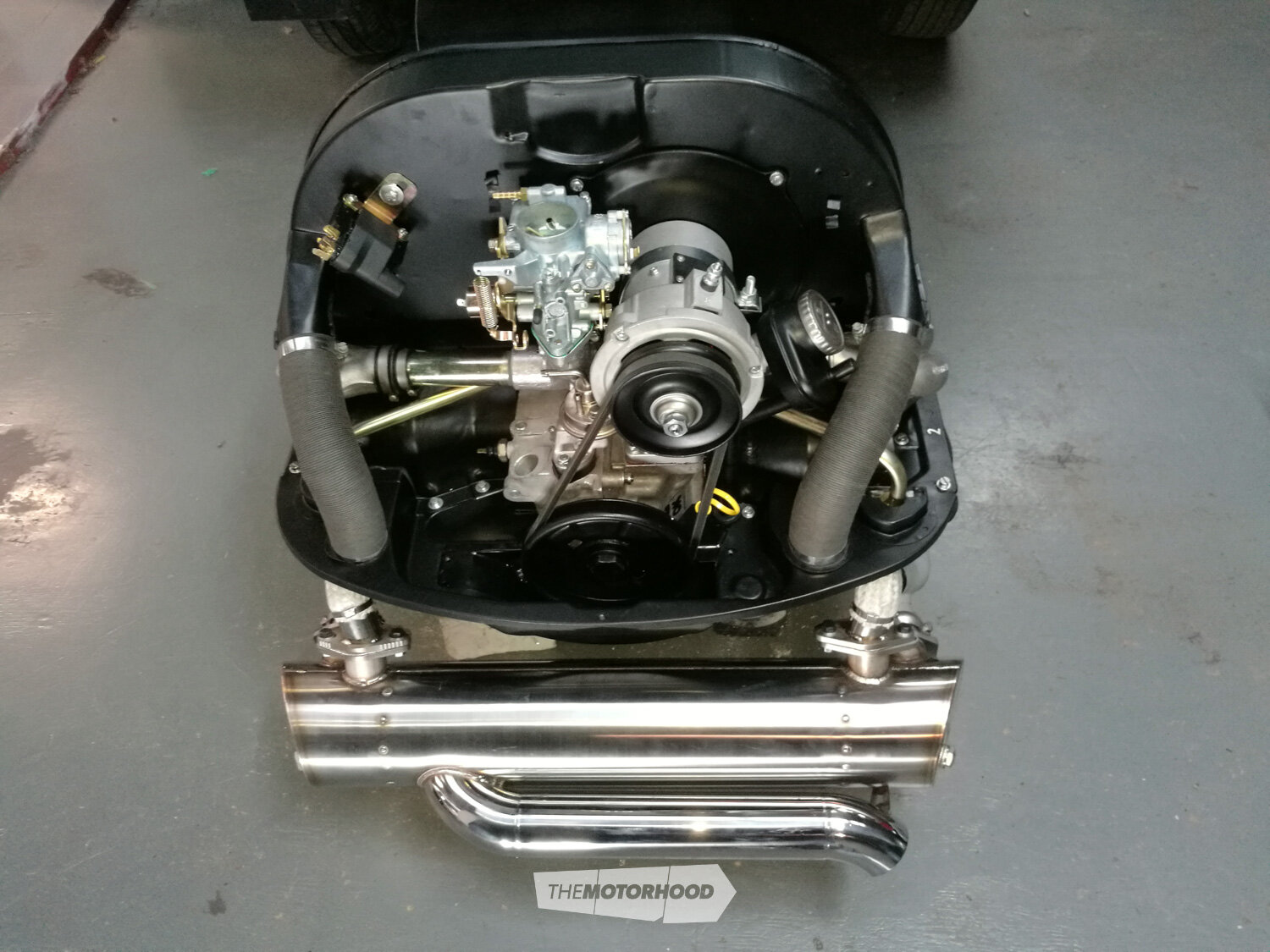
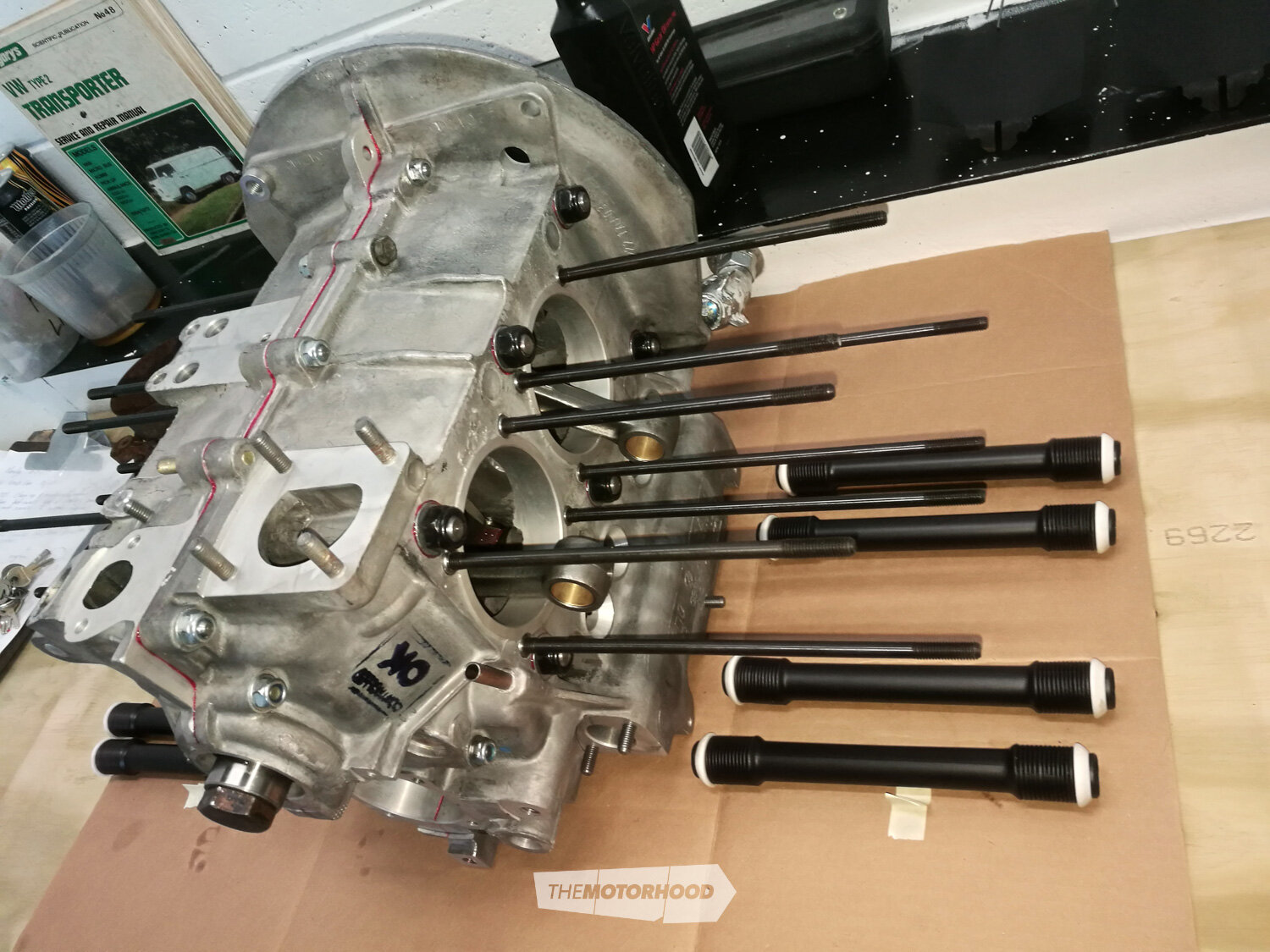
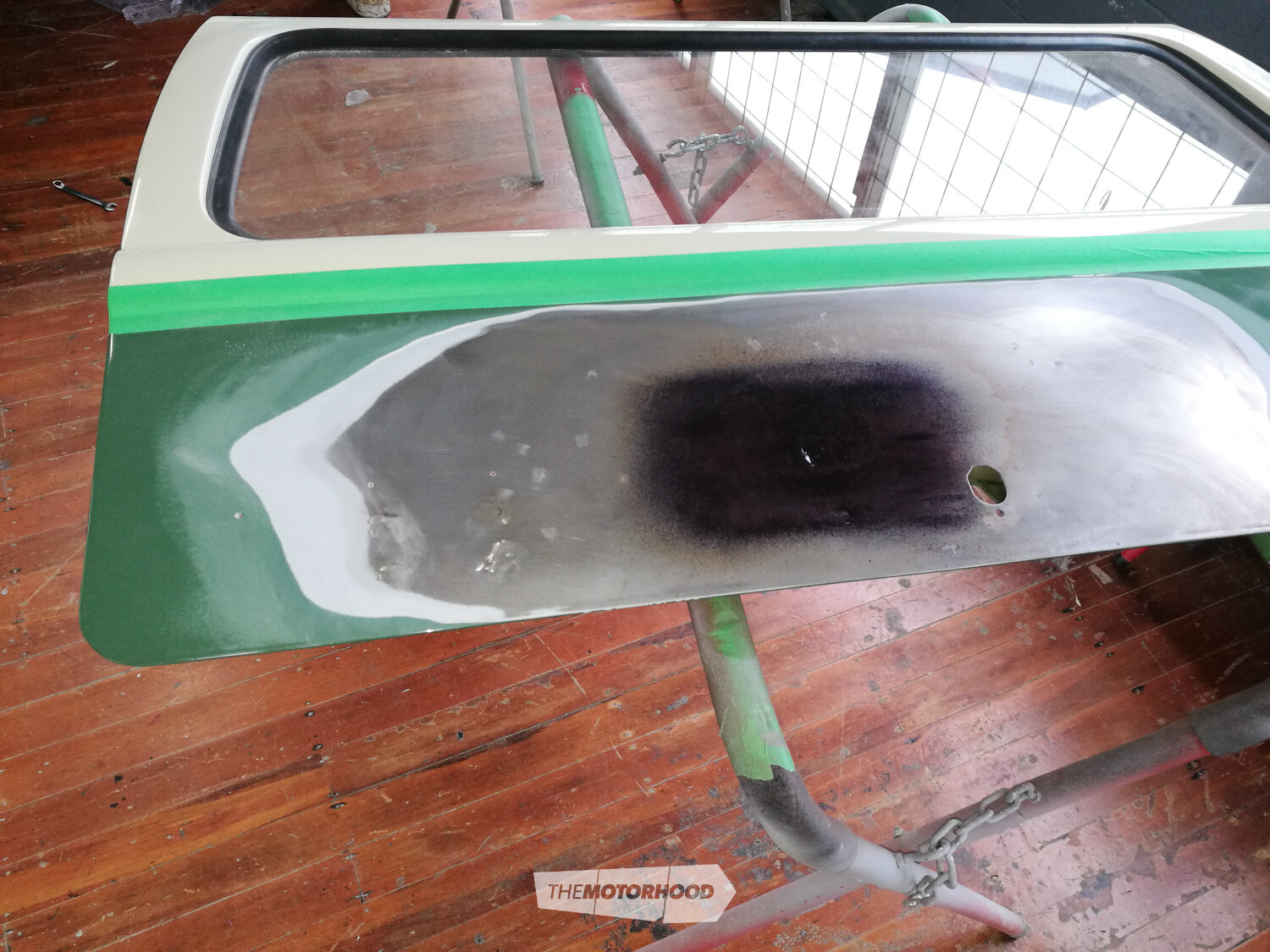

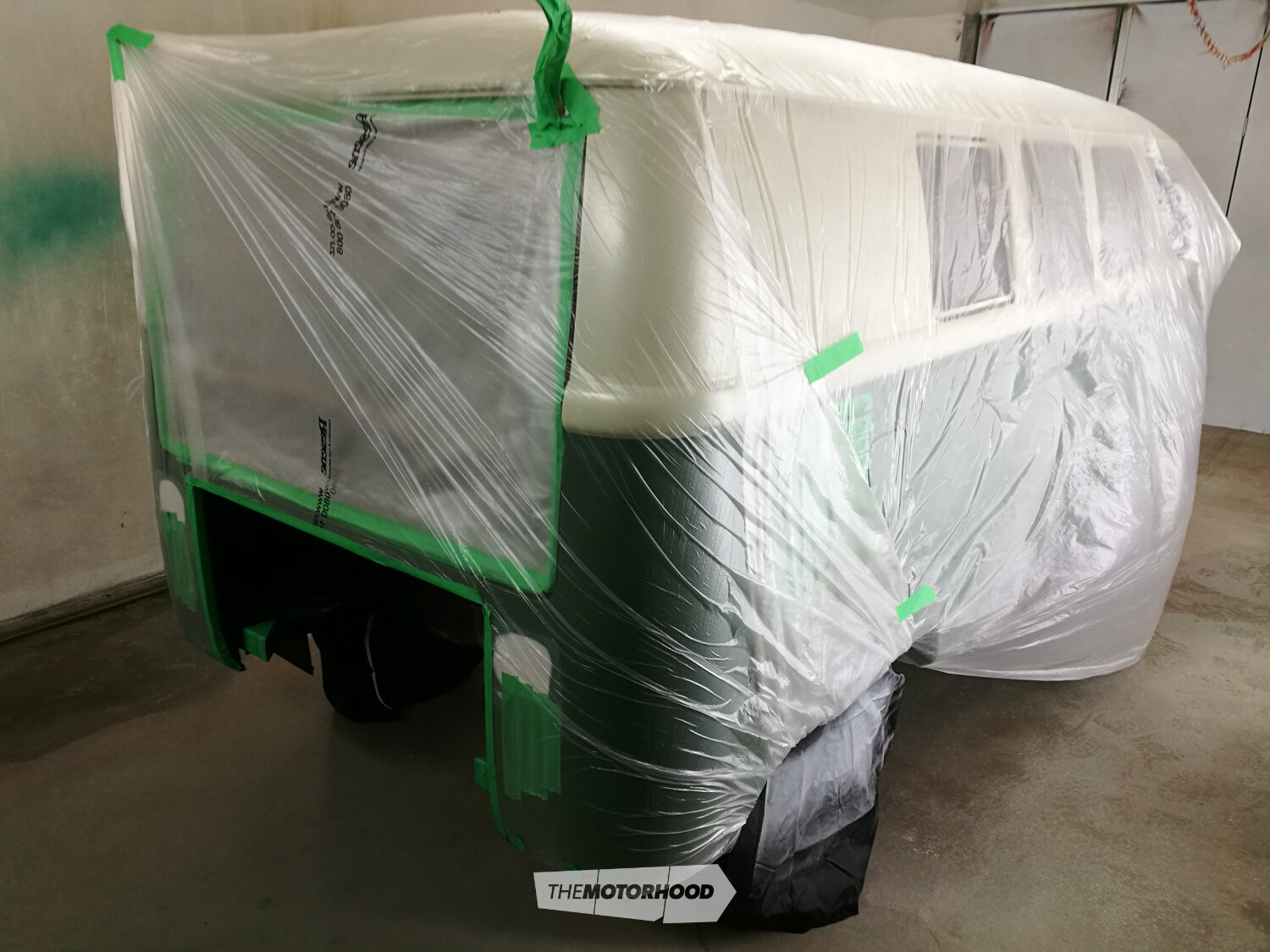
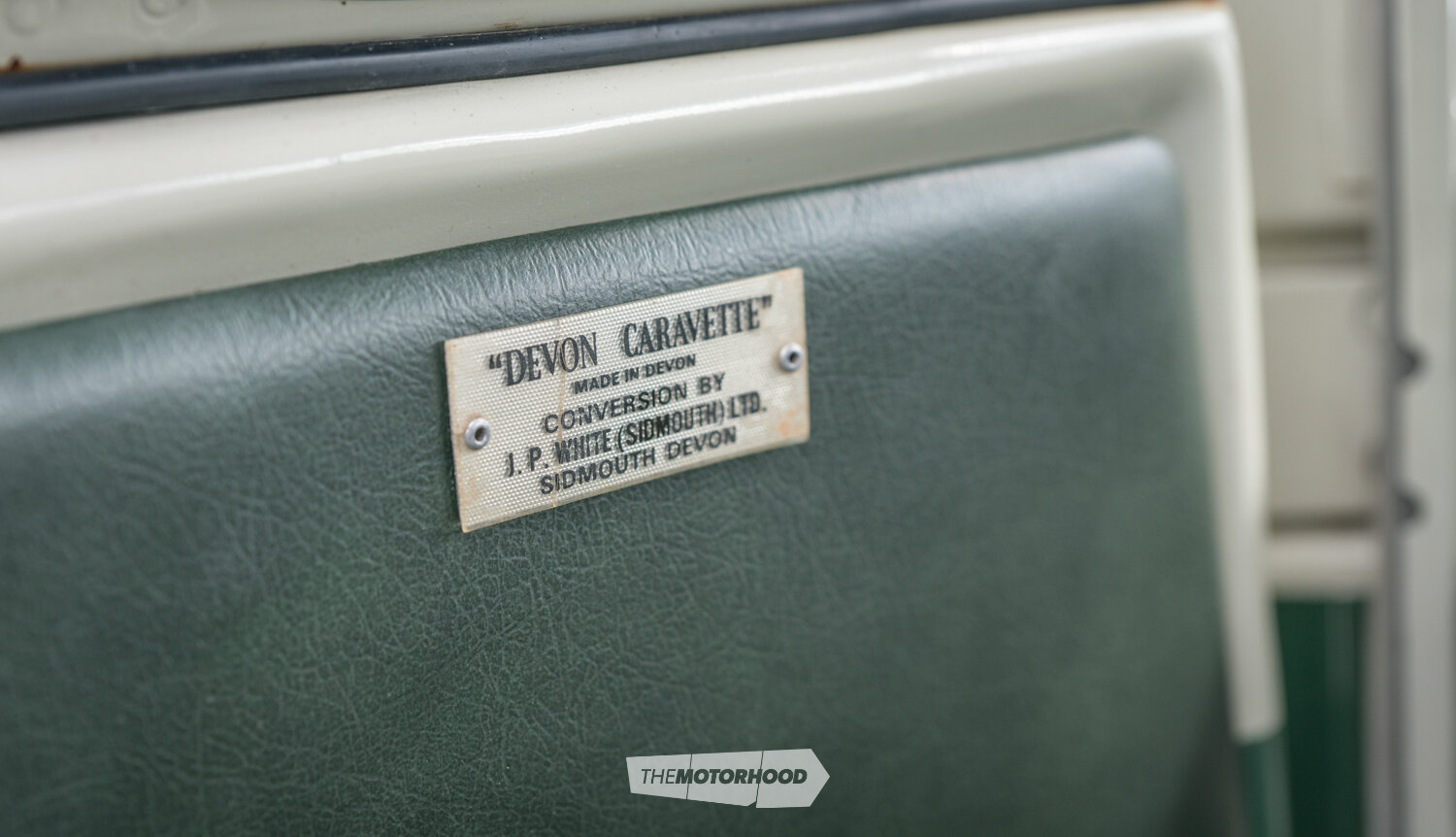
Steve would like to say a special thanks to the team at The Surgery, including Maurice Lindsay, the mechanic responsible for the engine work, and Lance Parker of Rotary Motor Trimmers who made six attempts at fitting the ceiling until it was perfect. He also imported the material for the seat cushions from Australia to have it as close to the original cushions as possible and replaced with the piping, etc, to have the absolute original look.

Surgical procedure
The first call Steve made was to renowned restoration specialist John Galvin at The Surgery. “I was so pleased we have such expertise based here in Wellington,” says Steve. Within a couple of weeks, it was another trip on the back of a tow truck to The Surgery for an analysis. “With the expertise on hand from the team at The Surgery we made some very logical decisions to ensure we had a reliable vehicle. We ended up fitting a complete new 1500cc motor built to original specifications.” This wasn’t exactly spoiling its originality, as the original motor had been changed out 25 years ago. The only upgrade was electronic ignition and a stainless steel exhaust. The gearbox had a whine, so that too was completely rebuilt to original specifications. While the running gear was out, the petrol tank was also removed, flushed, and repainted in original colours, and the motor housing area was sandblasted and repainted. Everything mechanical was restored and reconditioned. The original king-pins that were also replaced, and a reconditioned steering box fitted.

“Where possible, everything has been kept original and the temptation to modernise resisted. We even still have the drum brakes, which work absolutely fine,” says Steve. He had wanted to repaint the Kombi red and white, but as work progressed he realised this was perhaps the most original Kombi still running and thought a colour change back to its original Velvet Green and Pearl White scheme was more appropriate. All the brightwork was refurbished, plus a few modern chrome accessories were ordered and fitted.
“The van has always been registered and has retained the original black plates, which to me added value and originality,” says Steve.
The van retains the original badges, cabinets, and hinges, and it even has the original clothes hangers for the wardrobe, which are held in place with the original wooden dowels. Steve repaired and restored the cabinetry (during lockdown). The ceiling has been relined in new, original-style VW material, and the upholstery fabric for the seats was imported from Australia.
“We have endeavoured to add some modern luxuries to the camping experience, including a drive-in tent with fully closable sides — we do have the original awning but prefer the much larger option — and our camping table comes complete with our Nespresso machine. The original gas stove still works and is intact and even came with the original refillable gas bottle,” says Steve.
Now as a grandparent — and as a tribute to his late father — Steve and his wife Denise are now sharing that same camping experience with their grandkids for a Kombined experience.
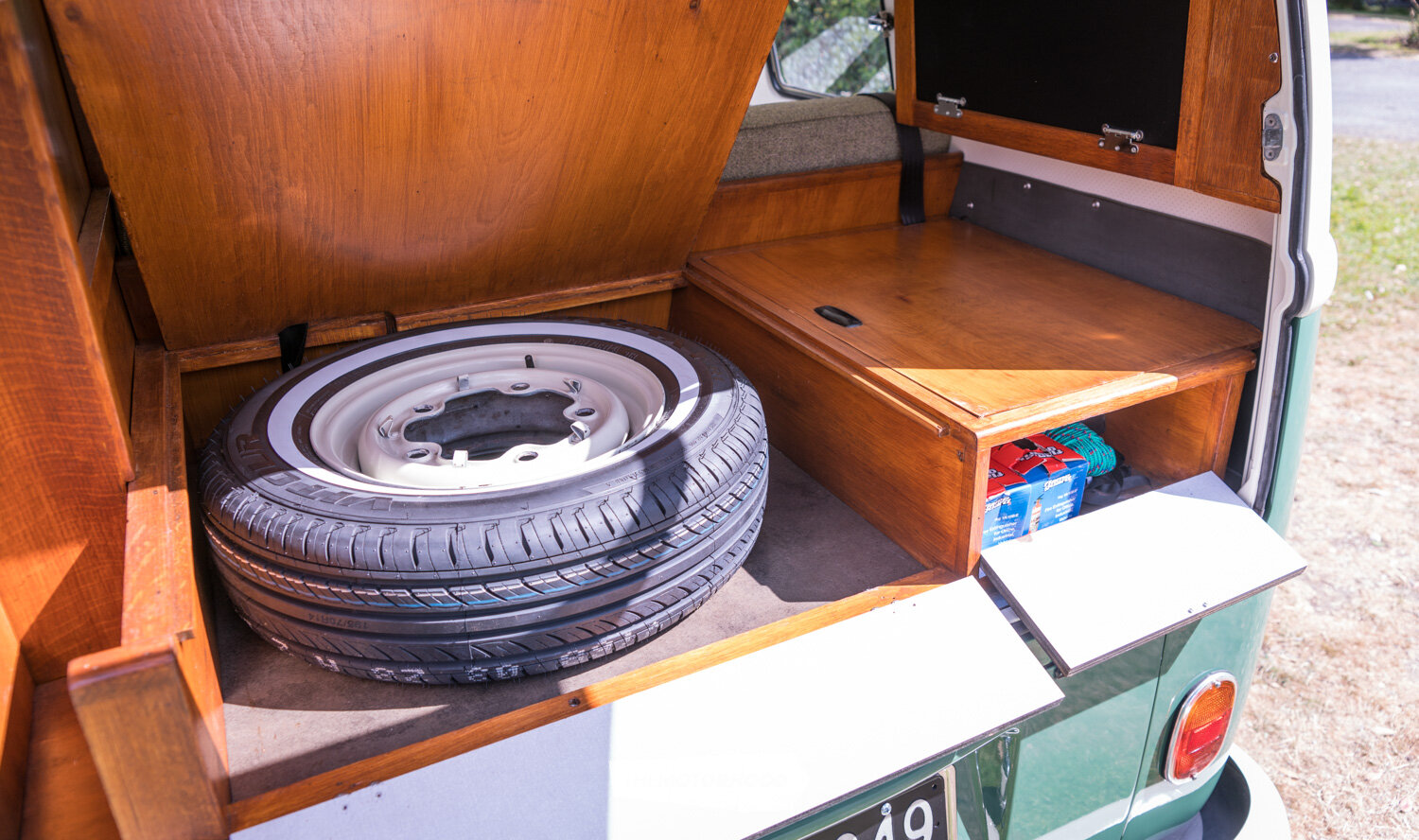
This article originally appeared in New Zealand Classic Car issue No. 363

